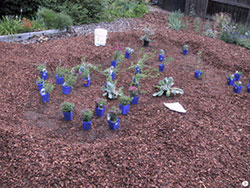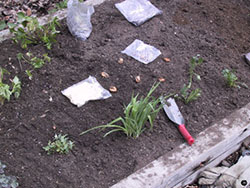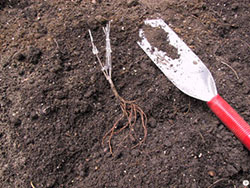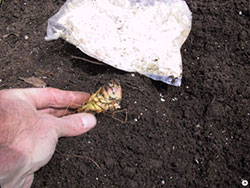 Hardy perennials, grown outdoors or in cold frames can theoretically be planted whenever you can work the soil. Actively growing plants from greenhouses are best planted after the danger of frost has passed in the spring, or no less than one month before the first autumn frost. Plants that are marginally hardy, or are situated in less than optimal sites are usually best planted in May or June. This allows them
Hardy perennials, grown outdoors or in cold frames can theoretically be planted whenever you can work the soil. Actively growing plants from greenhouses are best planted after the danger of frost has passed in the spring, or no less than one month before the first autumn frost. Plants that are marginally hardy, or are situated in less than optimal sites are usually best planted in May or June. This allows them to become established before the first winter season.
to become established before the first winter season.
How should I prepare my planting site?
To prepare the planting site, remove large rocks, old roots and dead plant material. Then loosen the soil with a spading fork, and incorporate organic matter (compost, sphagnum peat, or aged manure) into the soil. A general recommendation is 3 cubic yards of organic matter to every 1,000 square feet. This is the equivalent of a 1-inch layer over 1,000 square feet.
How should I plant my perennials?
 Most perennials are available in one gallon, four inch or smaller pots. To plant, remove the perennial from its pot and place it in a hole. Make sure the top of the rootball is flush with the overall soil level. Gently firm the soil mix around the rootball to eliminate large air pockets. Next, thoroughly water your newly planted perennials. New plantings in full sun often need water every two
Most perennials are available in one gallon, four inch or smaller pots. To plant, remove the perennial from its pot and place it in a hole. Make sure the top of the rootball is flush with the overall soil level. Gently firm the soil mix around the rootball to eliminate large air pockets. Next, thoroughly water your newly planted perennials. New plantings in full sun often need water every two  days the first few weeks or so after planting, depending on weather conditions. Progress to longer intervals between watering (four to six days) to encourage roots to expand into surrounding soil.
days the first few weeks or so after planting, depending on weather conditions. Progress to longer intervals between watering (four to six days) to encourage roots to expand into surrounding soil.
Container-grown perennials may be rootbound. When this occurs, loosen the rootball by untwining or scoring it with your hands or a sharp knife.
For more information, see the following Planttalk Colorado™ video(s).
For more information, see the following Colorado State University Extension Fact Sheets



